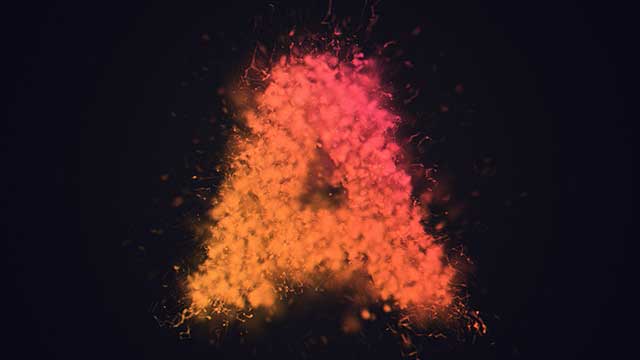

At a 15-19 September 2010 conference on the eruption, Höskuldsson and others (2010a) characterized the course of events during the 20 March to 12 April basaltic Fimmvörðuháls flank eruption at Eyjafjallajökull as follows: "At the beginning the eruption featured as many as 15 lava fountains with maximum height of 150 m. In terms of satellite thermal data on the overall eruption, the MODVOLC system measured extensive (multi-pixel) daily alerts during 21 March-, but the alerts became absent thereafter. Revised from a map by Sigmundsson and others (2010).

Two of four geodetic (GPS) stations are shown (STE2 and THEY). The map includes a small slice of the Atlantic ocean along the lower left-hand margin. During 14-29 April 2010 many earthquakes struck with epicenters along the N-S axis of Eyjafjallajökull (black dots). Glaciers cover extensive portions of both Eyjafjallajökull and Katla volcanoes (light pattern). Stars indicate 2010 eruptive sites (map scale at top left). A shaded-relief map showing Eyjafjallajökull (E), and 9 km to its E, the flank vent Fimmvörðuháls (F). The ash blew both over the Atlantic and for considerable intervals passed directly over Europe, halting flights of most commercial aircraft for nearly a week in a controversial shutdown with economic impacts in the billions.įigure 17. After melting overlying portions of the icecap, the summit crater then emitted clouds of fine-grained ash that remained suspended in the atmosphere for long distances. Eruptions began in the initially ice-capped summit crater of Eyjafjallajökull on 14 April 2010 ( BGVN 35:03 and 35:04). Venting at Fimmvörðuháls took place on an exposed ridge cropping out in a region with extensive glaciers to the E and W. The eruption's initial phase, 20 March-12 April 2010, occurred at Fimmvörðuháls, a spot on the E flanks of Eyjafjallajökull (figure 16, and "F" and "E" on figure 17). In addition to discussing the eruption and its final stages, this report also cites a small sample of abstracts and papers from the numerous conferences, sessions, and publications that have thus far emerged on the eruption. By 23 June 2010, the Iceland Meteorological Office (IMO) and the University of Iceland Institute of Earth Sciences (IES) ceased issuing regular status reports.

Gudmundsson and others (2010a) noted that the last day of sustained activity at Eyjafjallajökull took place on. Eruption ended in late June 2010 sample of growing literature on the eruption


 0 kommentar(er)
0 kommentar(er)
